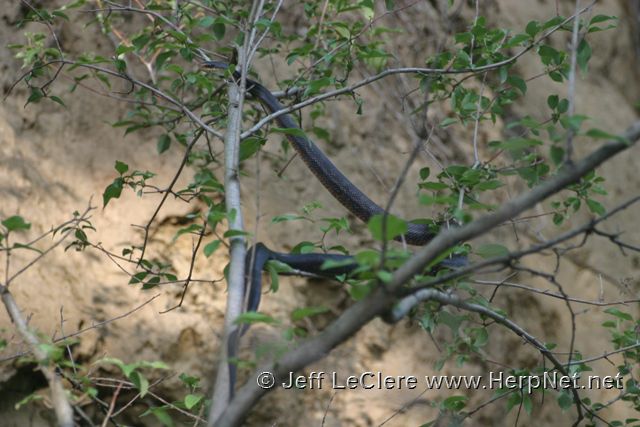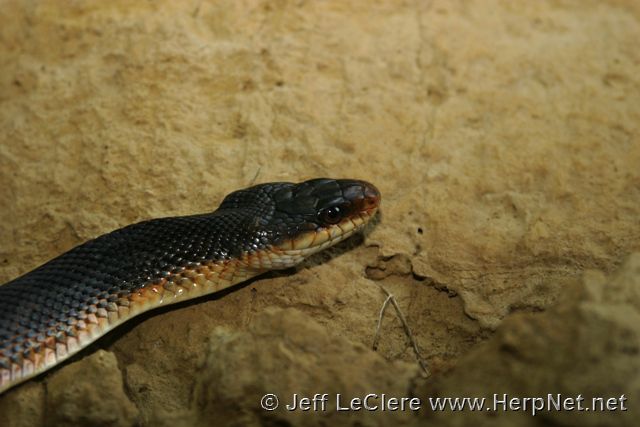Western Rat Snake (Pantherophis obsoletus)
Alternate names: Western Ratsnake
by Jeff LeClere
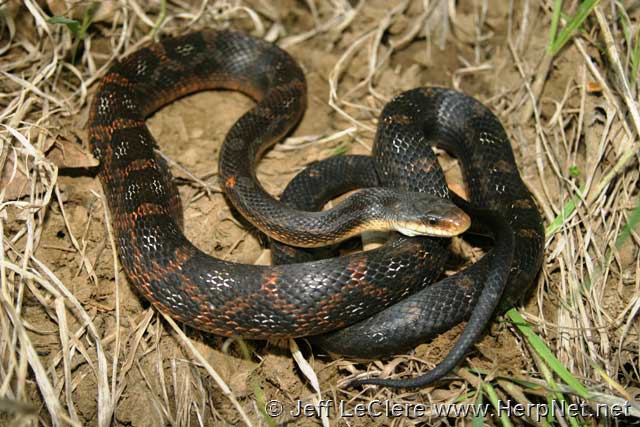
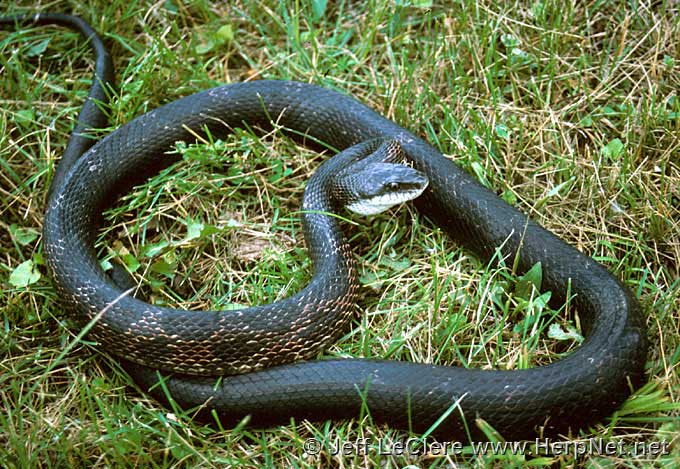
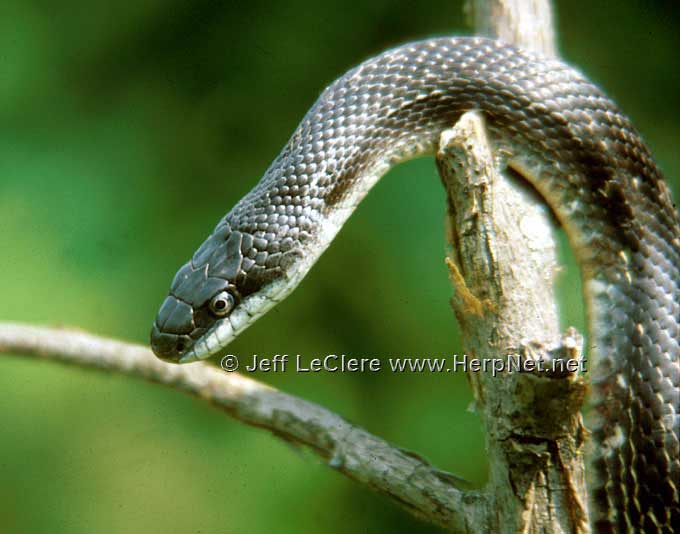
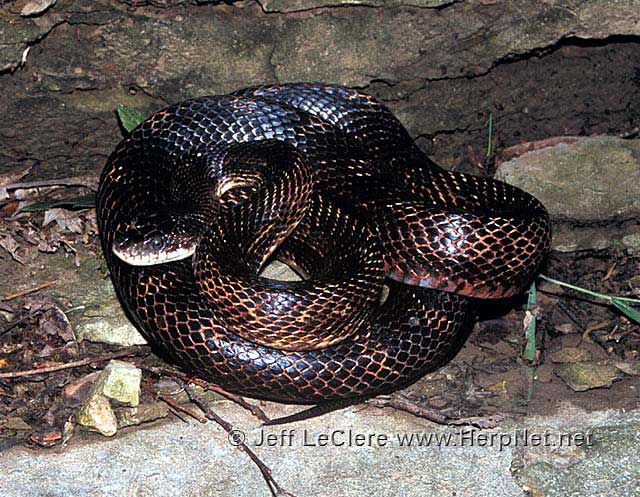
Status
PROTECTED and Species of Greatest Conservation Need. It is illegal to kill or collect this species by law in Iowa. Common in eastern Iowa, records for the southern parts of the state are scattered. Help us fill these gaps. Please report any sightings of this snake in southern Iowa to us or the DNR. Former names include black rat snake, Scotophis obsoletus, Elaphe obsoleta.
Description
Harmless to humans. Western rat snakes are among the largest of Iowa’s snakes. Adults range from 40 – 74 inches in length. The record is 101 inches (Conant and Collins, 1991). It is generally a black snake; although very few specimens are completely pitch black. Most adults have shiny, unmarked black heads and necks with bright white labial scales.
Dorsally, the body is black or brown with white, yellow, or red in between the scales and sometimes on the scale tips as well. In most cases, these highlights accent a blotched pattern that is much more evident in young specimens. Posteriorly, the snake becomes solid black again. Ventrally, the throat and neck are white. At the mid belly, black or brown invades the white, and posteriorly, the ventrals are a shiny bluish black. The anal plate is divided, and the scales are weakly keeled dorsally becoming smooth on the first two or three scale rows on the sides.
The young are brightly patterned with black or dark brown blotches on the back and sides on a white or light gray background. This pattern fades quickly, and the young snake will reach adult coloration in about two or three years. Young are about 11 – 13 inches at hatching.
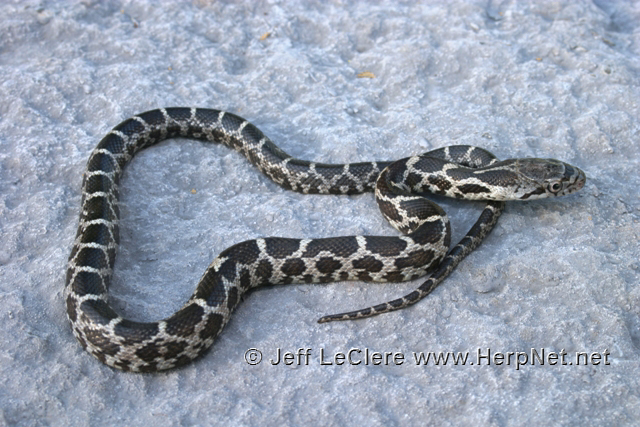
Subspecies
No subspecies are currently recognized.
Range
Western rat snakes are found west of the Mississippi River. In Iowa, this snake is found throughout the blufflands all along the Mississippi River and slightly inland the east, and in forested areas of southern Iowa.
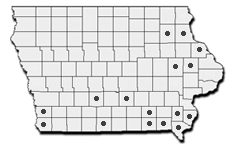
Habitat
Western rat snakes prefer heavily wooded habitats. They are one of the few Iowa snakes that are actually found in deep woodland areas. They may be found on the north and east sides of bluffs; while other snake species prefer the warmer side of the bluff.
Habits
Western rat snakes are often called “blacksnakes” by most Iowans. Western rat snakes emerge from their rocky crevice retreats in April or early May. They overwinter with other rat snakes and/or with many other snakes species, most notably timber rattlesnakes, racers, and bullsnakes. Many rat snakes move to the other side of the bluff during the summer, but individuals may be scattered along the entire bluff. They are diurnal even during hot weather, though they do move at night on occasion. I found one adult crossing the road in Allamakee County on 22 June around noon. The weather was hot and sunny.
These snakes are difficult to find in their wooded habitat. In states farther west, they frequent more flat open meadows and grassland where they use cover, so one may flip tin, boards, and rocks and turn up many of these snakes. In Minnesota, western Wisconsin, and northeastern Iowa (at least), they do not use that cover nearly as much. Instead they climb trees up to 40 feet high and may spend days hiding in the hollows of trees. Because rat snakes spend most of their time in areas where other snake species are not, many herpers do not look in places that these snakes are found.
A few western rat snakes are found under rocks along bluff outcroppings or roadcuts, but to search for these snakes in their vast forest habitat, I rely more heavily upon road cruising at night on hot, humid nights just before or just after a storm (LeClere, 1996). One young specimen was found on such an evening in Clayton County on 25 June. It had just turned black that year. The weather was hot and humid and a front was just starting to move in as the snake was found. It was a freshly struck by an automobile and was still twitching.
When approached, western rat snakes usually remain motionless. With their cryptic black coloration, they become invisible against the bark or resting on the dark forest floor. When caught, most western rat snakes will bite, although most will calm down readily. Still, some remain nervous and will thrash and strike even in captivity. They will vibrate their tails which produces a rattling sound causing it to be slain as a rattlesnake by farmers and locals. Some will kill it simply because they are startled by a 5 or 6 foot black snake. This is sad because these harmless snakes are excellent controllers of rodent populations.
Rat snakes breed in the spring and the female deposits about 15 eggs in rotting wood in late summer. In the fall, the eggs hatch. Western rat snakes usually migrate back to their overwintering dens in October.
Food
The adults usually consume rodents. Mice, chipmunks, voles, shrews, even full grown squirrels have been reported in the western rat snakes diet. These snakes probably prey on birds and birds’ eggs most heavily of all Iowa snakes because of their climbing ability and time spent in trees. The young will feed on frogs, especially treefrogs, lizards, and young mice. A juvenile western rat snake I found on the road just before a storm had eaten a gray treefrog (LeClere, 1996).
